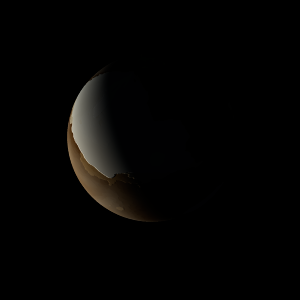|
|
Space Astro
|
Info for exoplanet "Girsida"
| Scientific (actual) data |
|---|
| Name | Kepler-1044 b |
| Planet status | Confirmed |
| Radius | 0.238 |
| Orbital period | 6.77409 |
| Discovered | 2016 |
| Updated | 2021-02-05 |
| Tconj | 2454970 |
| Publication | Announced on a website |
| Detection type | Primary Transit |
| Alternate names | 2MASS J19323466+4639584 b, K01998.01, KIC 9834040 b, KOI-1998 b, KOI-1998.01, WISE J193234.65+463958.3 b |
| Star name | Kepler-1044 |
| Right ascension | 293.14° |
| Declination | 46.67° |
| Mag j | 14.268 |
| Mag h | 13.967 |
| Mag k | 13.903 |
| Star distance | 1507 |
| Star metallicity | 0.04 |
| Star mass | 1.08 |
| Star radius | 1.11 |
| Star age | 3.55 |
| Star temperature | 5985 |
| Star alternate names | 2MASS J19323466+4639584, KIC 9834040, KOI-1998, WISE J193234.65+463958.3 |
| Wikipedia article | Kepler-1044 b |
Back
| |
| Fictional info (?) |
|---|
| Suggested name | Girsida |
| Planet type | Cold planet |
|
| Atmosphere | Xenon | 83% |
| Hydrogen | 15% |
| Ethane | 1.2% |
| Carbon monoxide | 0.0016% |
| Atmospheric pressure | 0.04 bar |
 |
| Moon | Topanmede | Huge potato shaped oceanic asteroid |
| Jullassa | Huge slightly egg-shaped crater-filled planetoid |
| Delia | Huge round rocky moon |
| Theusmab | Very small potato shaped rocky moon |
| Lesut Stohe Sao | Small potato shaped gaseous comet |
| Google search for Girsida |
|
Website by Joachim Michaelis
|
|
|
|